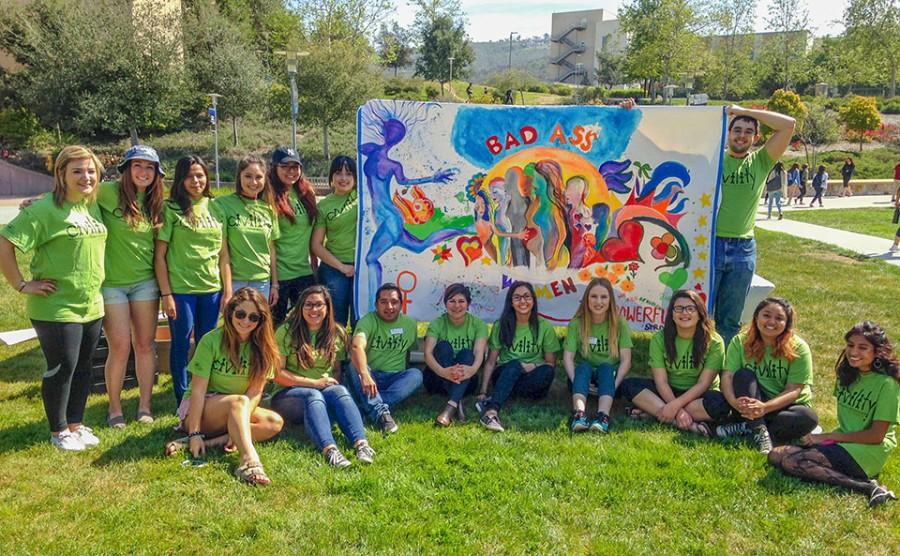Civility Campaign’s Womyn’s Herstory Month celebration
Civility Campaign holds kickoff event
Civility Campaign showcases Mural Project by Marilyn Huerta and Joanne Tawfills.
March 9, 2016
Organizers of a Civility Campaign T-shirt day marked the beginning of Women’s Herstory Month—a celebration of women leaders on campus and social issues facing women—during the U-Hour on Tuesday, March 1.
A committee from the USU Activities Board, Black Student Union, Latin@ Center and CSUSM Hillel organized the event, in which students received green T-shirts sporting the word “Civility” on the front and “Culture and Humanity” on the back, said Arely Ramos, Student Specialist of the Cross Cultural Center, who headed the planning committee.
The Civility Campaign website says, “The Civility Campaign is a campus-wide program that strives to create a community that demonstrates respect for oneself and others, treats others with dignity, and promotes behaviors that create a physically and psychologically safe and supportive climate.”
In front of the USU, 15 to 20 Civility Campaign leaders used poster boards and speakers to bring awareness about slut shaming, the gender wage gap and social stigmas.
At the table about slut shaming, participants included strangers who wrote something positive on the whiteboard without their partner seeing. When photos were taken of each person, the individuals would then look at what the other person had to say about them.
As students made their way through each activity, organizers checked off participation. Those who finished all six activities got T-shirts.
On the topic of women leadership at CSUSM, attendees named specific female campus leaders by filling out forms detailing names and the reasons those women inspire. Organizers collecting the information will send out thank you cards on behalf of participants.
Activities also included having participants write positive statements about women and answer questions regarding their contributions to society. Students were encouraged to take a picture with their particular statements, which would then be published through social media.
A game setting highlighted the gender wage gap issue. Leaders asked players to match social groups with the “appropriate” wage level using a “white man” group as the measuring stick. The comparison groups included Asian women, white women, black women, Pacific-Islander women, American-Indian women and Hispanic/Latina women.
In this same section, a display board presented the stigmas that are placed on women around discussion about their natural bodily functions including breastfeeding and menstrual cycles.
When asked about the take away from the event, Ramos said, “We need to expose our campus community to social issues that happen on a daily basis to particular identities without fear. We shouldn’t have to hide or be embarrassed about the beauty and nature of our bodies, but instead celebrate and feel empowered with our chosen identities.”
Other Women’s Herstory Month events will include the Gender Bender Show from 7 p.m. to 10 p.m. on March 11 at The Clarke Field House and Make the Breast Choice at 5:30 p.m. on March 16 at the Gender Equity Center (USU 3100).
For more information on Women’s Herstory Month, visit www.csusm.edu/asi/departments/cc/herstory.html.


